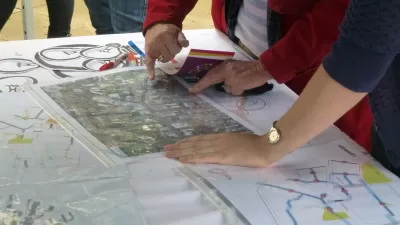Ten years ago I wrote "Graduate School 2008: Nuts and Bolts of Applying". As deadlines draw near for this year’s round of applications it is a good time to revisit and update this advice.

Ten years ago I wrote "Graduate School 2008: Nuts and Bolts of Applying." In it I exposed the inner workings of the graduate admissions process. In subsequent blogs I looked at each of the key components of an application. As deadlines draw near for this year’s round of applications it is a good time to revisit and update this advice.
"Nuts and Bolts of Applying" still provides a good overview. What I would add ten years on is that you should remember that the people reading the files are almost universally the faculty members who will likely teach you. This differs from undergraduate programs where specialist admissions staff are often involved.
The main area where this matters is in "Writing a Good Statement of Purpose." As I noted in my earlier blog, “In general, you need to strike a balance between showing interest and experience in the field, [providing] opinions about specific topics, and [indicating] a need and willingness to learn more…. What I'm looking for is … openness to new and different ideas, and an interest in growing and learning.” This is quite different to the kind of letter one might write in order to get a job, where the aim is to show you have all the skills needed already. Students who write as if they are applying for a job make it difficult for readers to see how they might flourish in graduate school.
Demonstrating that you have experience in planning and related fields is still key and easier to do in the more robust contemporary job market. This definitely does not need to be a job with “planner” in the title. However, key is a job or voluntary activity that helps you engage topics important to planning—from environmental issues to social concerns or regional trends--and shows a commitment to public service.
On letters of reference, I would add to my earlier advice that faculty generally write better letters of reference for graduate school than employers do. This is about numbers—faculty meet dozens of not hundreds of students each year and see which ones succeed in graduate programs. They tend to write more substantial and nuanced assessments of your capacity for future studies. I now recommend at least two letters from faculty members unless it is a very long time since your prior degree.
Transcripts and GREs remain part of the picture but only part. I sometimes find students want to know a magic number for admission but, for example, GPAs vary by college and specialty. Portfolios, while allowed in some schools are only required in a very small number of programs, typically for specializations in urban design.
Finally some students consider cost when applying to graduate schools. I agree, cost is really important. However, as I have noted, the sticker price often has little relation to the real price and you won’t know the real price until you get your acceptance packet. As I have noted in that blog:
The net price of your education has multiple components. Costs include tuition, fees (which can be substantial), housing/transportation (varies a lot from place to place), any required health care plan, and moving. Revenues can include assistantships (that you work for), fellowships (that just provide money), part-time work at the university, and summer internship programs. You can fill gaps with loans, savings, and other paid work. In the longer term you can also factor in issues like fit and preparation. It may save you money if the program closely fits your interests and helps you get the kind of job you really want.
The sticker price (for tuition) is quite different to the real price (for all of the above).
In the end choosing a graduate school is a lot about fit between you and the program. So do your research, apply to enough schools to have choices, and see what happens.

Maui's Vacation Rental Debate Turns Ugly
Verbal attacks, misinformation campaigns and fistfights plague a high-stakes debate to convert thousands of vacation rentals into long-term housing.

Planetizen Federal Action Tracker
A weekly monitor of how Trump’s orders and actions are impacting planners and planning in America.

In Urban Planning, AI Prompting Could be the New Design Thinking
Creativity has long been key to great urban design. What if we see AI as our new creative partner?

Cal Fire Chatbot Fails to Answer Basic Questions
An AI chatbot designed to provide information about wildfires can’t answer questions about evacuation orders, among other problems.

What Happens if Trump Kills Section 8?
The Trump admin aims to slash federal rental aid by nearly half and shift distribution to states. Experts warn this could spike homelessness and destabilize communities nationwide.

Sean Duffy Targets Rainbow Crosswalks in Road Safety Efforts
Despite evidence that colorful crosswalks actually improve intersection safety — and the lack of almost any crosswalks at all on the nation’s most dangerous arterial roads — U.S. Transportation Secretary Duffy is calling on states to remove them.
Urban Design for Planners 1: Software Tools
This six-course series explores essential urban design concepts using open source software and equips planners with the tools they need to participate fully in the urban design process.
Planning for Universal Design
Learn the tools for implementing Universal Design in planning regulations.
Appalachian Highlands Housing Partners
Gallatin County Department of Planning & Community Development
Heyer Gruel & Associates PA
Mpact (founded as Rail~Volution)
City of Camden Redevelopment Agency
City of Astoria
City of Portland
City of Laramie






























